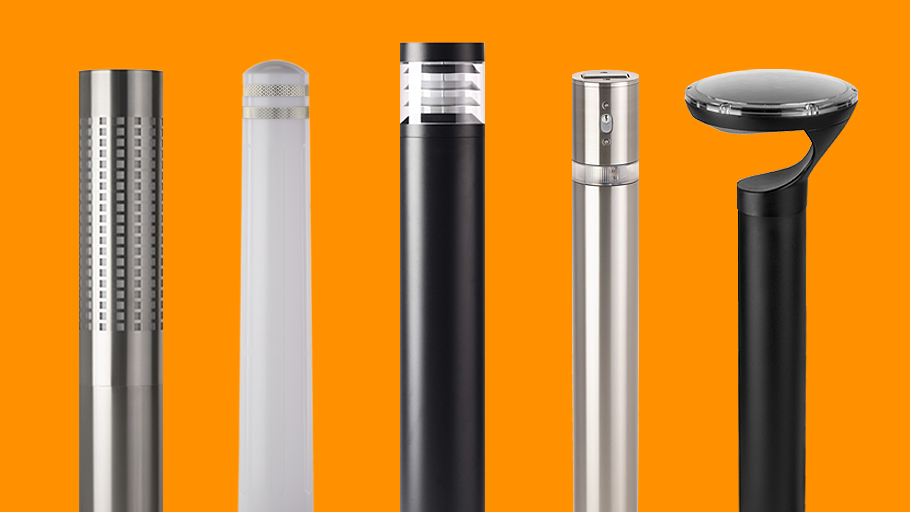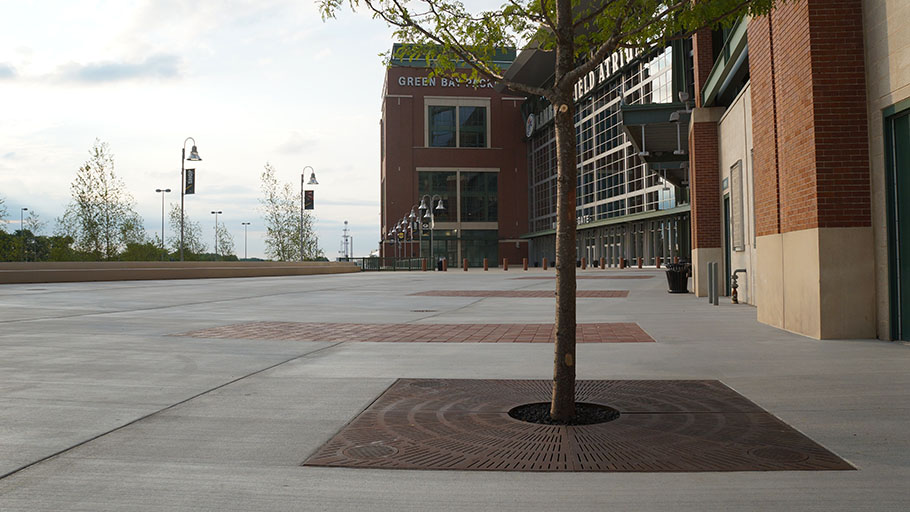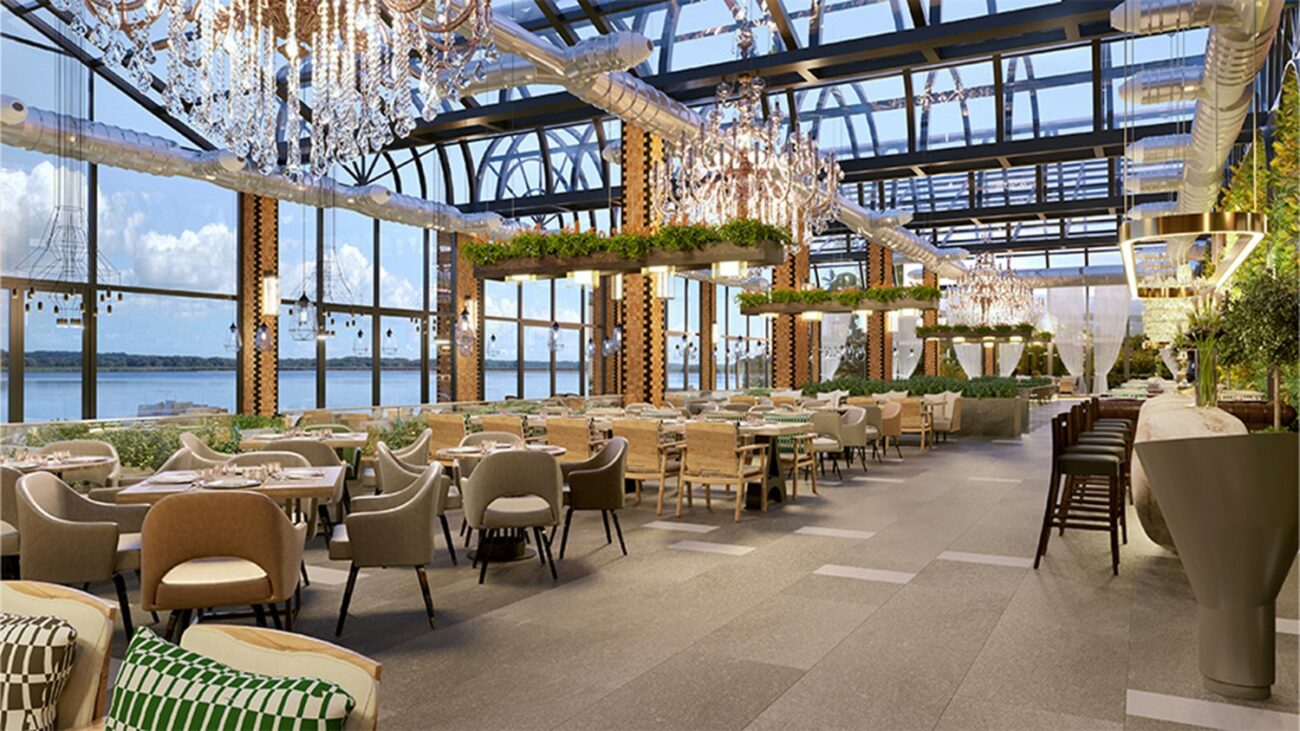Tips for durability and longevity
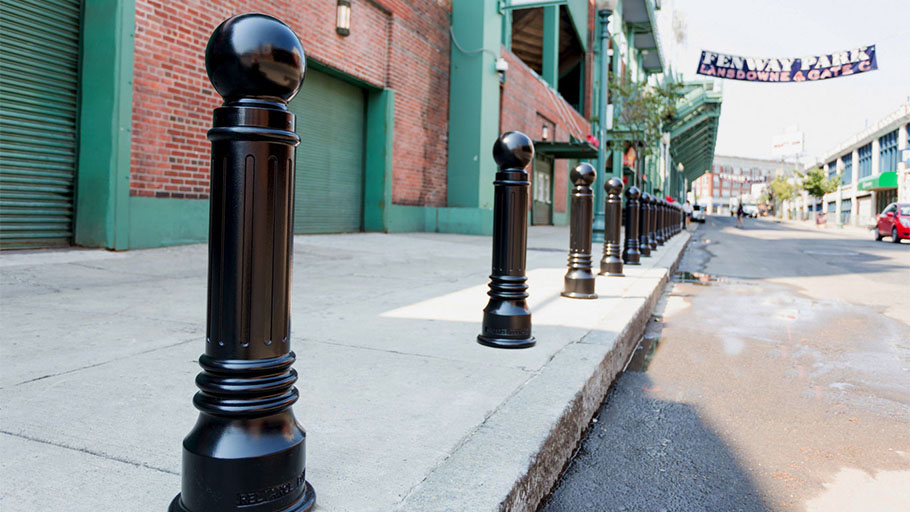
Essential for both design and functionality, metal site furnishings like benches, bollards, bike racks, and garbage bins play a key role in creating organized, accessible, and inviting outdoor spaces. However, they are continuously exposed to a variety of environmental factors such as rain, snow, UV rays, and pollution, which can significantly diminish their longevity and affect their appearance. This guide aims to offer valuable insights and tips on how to extend the lifespan of these essential outdoor metal products.
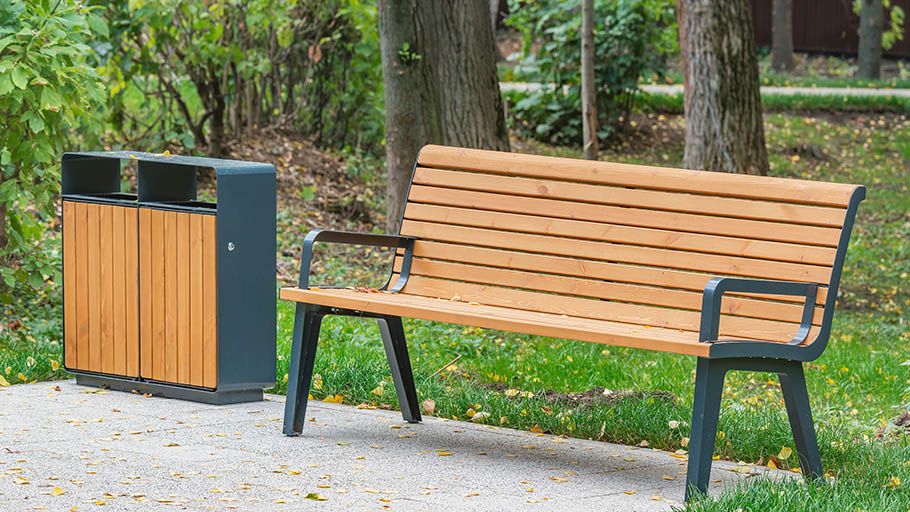
Common Types of Outdoor Metal Furnishings
We’ll explore some of the most frequently encountered types of metal outdoor site furnishings found in various public areas, including parks and parking lots. Although these furnishings are often made from similar materials, certain types are more commonly crafted from specific metals.
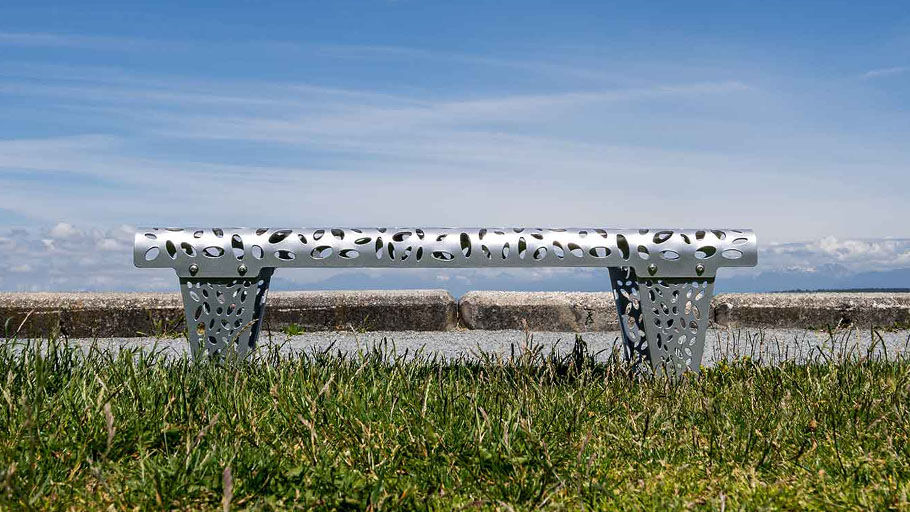
Benches
Material and Vulnerabilities
Metal benches are commonly constructed from materials such as stainless steel, aluminum, or cast iron. These materials, although durable, are susceptible to corrosion, particularly in coastal areas and places with high humidity.
To extend the life of your metal benches, consider these essential tips on coatings, cleaning, and regular inspections.
- Coating: Applying layers of coatings like polyurethane or epoxy can create an effective barrier that guards against rust and corrosion. These coatings not only preserve the structural integrity of benches and frames but also maintain their aesthetic appeal by preventing discoloration and degradation caused by regular exposure to moisture and pollutants.
- Cleaning: Using a mild detergent and a soft-bristled brush for cleaning can effectively remove dirt, grime, and bird droppings, which can be corrosive. Regular cleaning not only maintains the bench’s appearance but also its structural integrity.
- Inspection: Regular inspections for signs of peeling paint or rust can help in the early identification of potential issues, allowing for prompt remedial action and thereby extending the life of benches.
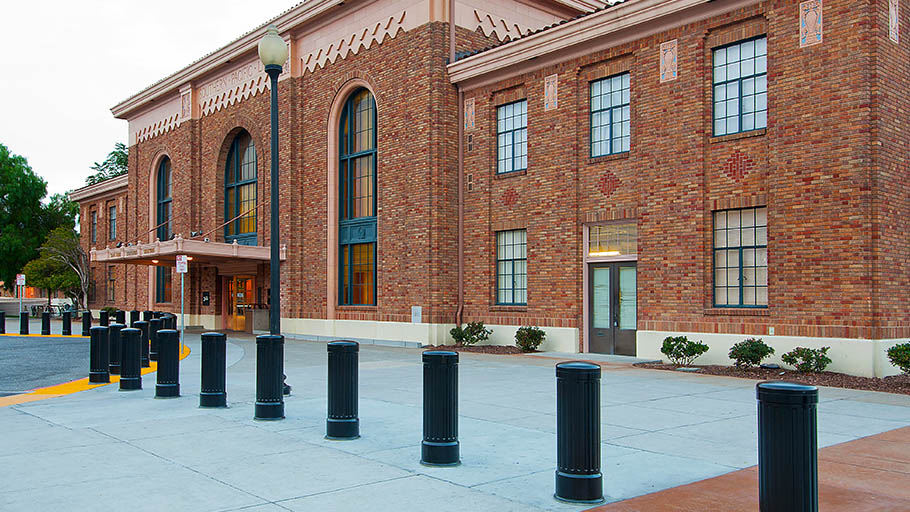
Bollards
Material and Vulnerabilities
Bollards serve as security barriers and are usually made of carbon steel or cast iron, materials that are prone to rust if not adequately maintained.
To ensure the long-lasting performance of your bollards, consider the following best practices for material selection and maintenance.
- Rust Inhibitors: Utilizing rust-inhibiting products such as Penetrol when painting metal surfaces can effectively seal the surface and halt the progression of rust. For materials like iron, opting for powder-coating can provide an optimal protective barrier against the elements. Additional protective coatings like IronArmor can further enhance this protection, safeguarding the bollard’s structural and aesthetic qualities.
- Material Choice: Choosing bollards made from stainless steel or aluminum offers superior corrosion resistance, reducing the need for frequent maintenance and ensuring a longer lifespan for the installation.
- Regular Maintenance: Regularly cleaning the bollards and promptly repairing any damage to their coatings can maintain both their appearance and functionality, thereby extending their service life.
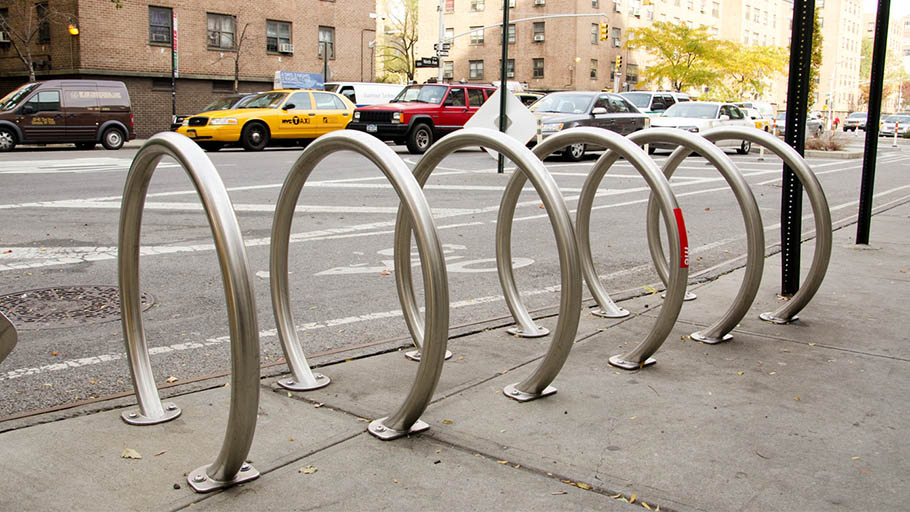
Bike Racks
Material and Vulnerabilities
Bike racks are often made from stainless steel or ductile iron, but are frequently overlooked when it comes to maintenance, making them vulnerable to wear and tear.
For bike racks that stand the test of time, consider the following advice on material choice and routine care.
- Material Selection: Opting for bike racks made from stainless steel can significantly enhance their durability, making them more resistant to environmental factors like rain and snow, which lead to corrosion over time.
- Regular Inspection: Periodic inspections for signs of rust, chipping paint, or powder coating, and structural damage can help in early identification of issues, allowing for timely repairs and prolonging the life of bike racks.
- Cleaning: Regular cleaning using soapy water and a soft cloth can remove dirt and grime, which can be corrosive over time, thereby maintaining the rack’s appearance and structural integrity.
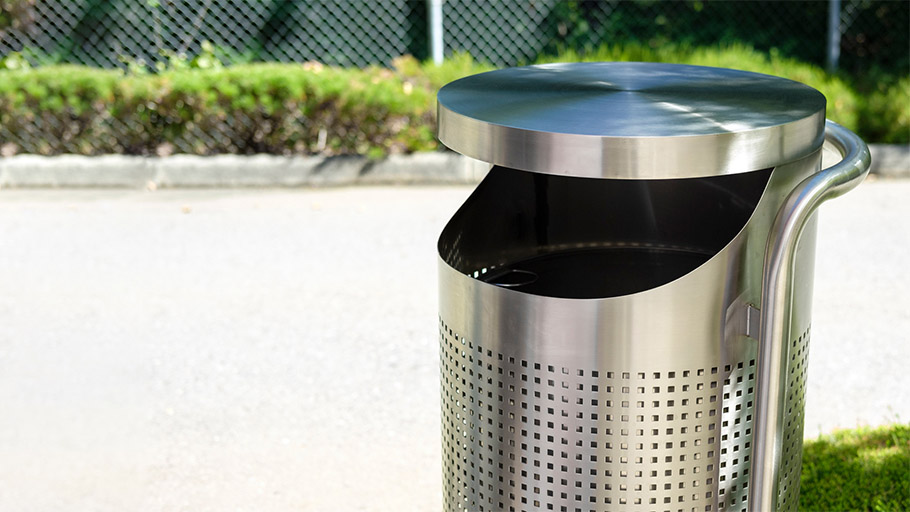
Garbage Bins
Material and Vulnerabilities
Garbage bins are typically made of stainless steel, aluminum or carbon steel, and are exposed to various types of waste, making them susceptible to corrosion and odors.
To maximize the lifespan of your waste bins, follow these guidelines for effective coatings and regular cleaning.
- Coating: Applying antimicrobial coatings can effectively prevent bacterial growth and the accumulation of odors, making bins more hygienic and pleasant to use.
- Cleaning: Regular cleaning with disinfectants not only maintains hygiene and prevents the spread of communicable diseases, but also extends the life of the bin by preventing the build-up of corrosive or damaging substances.
- Liners: Using durable plastic liners can protect the interior metal surfaces of the bins from corrosive waste, thereby extending their lifespan and reducing the need for frequent replacements.
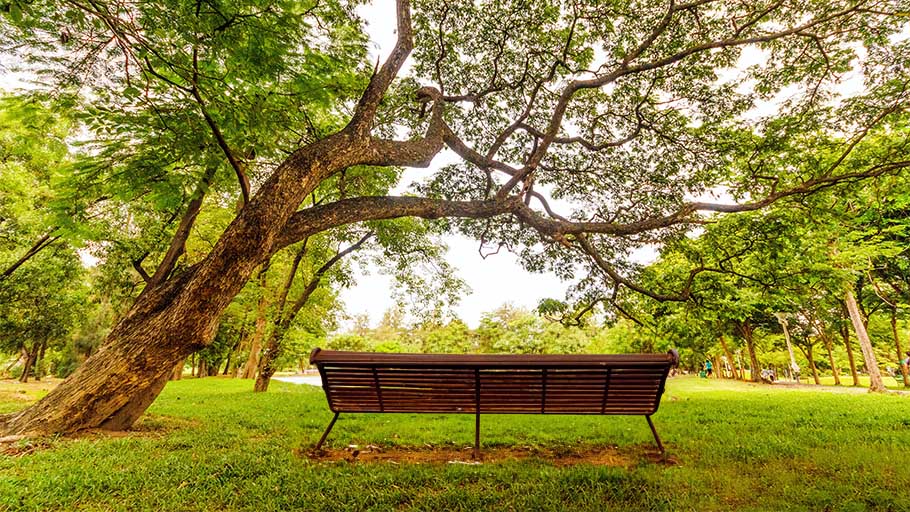
Common Issues and Solutions
Corrosion
One of the primary concerns for outdoor metal furnishings is their susceptibility to corrosion, a process that can significantly reduce their lifespan and aesthetic appeal. Environmental elements such as saltwater, acid rain, and industrial pollution are particularly harsh on metal surfaces and can accelerate the rate of wear and tear. Given these challenges, it’s crucial to adopt a proactive approach to maintenance. To effectively prevent rust and degradation, several factors, including the choice of material, coatings, and regular upkeep, should be carefully considered when maintaining metal furnishings.
While most forms of corrosion are detrimental to the integrity of the metal, there are cases where corrosion can have a positive effect. For instance, grey steel, which is sometimes used in tree grates, can form a natural patina. This patina not only enhances the visual appeal but also functions as a protective shield against further corrosion.
Material Selection
Selecting the appropriate material is crucial for extending the lifespan of your outdoor metal furnishings. Whenever possible, choose materials that are inherently resistant to corrosion, such as stainless steel, galvanized steel, or aluminum. These materials offer a strong foundation for durability and longevity.
Coatings and Finishes
Applying protective coatings like powder coatings, epoxy, or Reliance Foundry’s IronArmor, can offer an extra layer of defense against environmental wear and tear. This is especially beneficial for furnishings made of cast iron. These coatings are not only robust but also eco-friendly, making them a responsible choice for long-term use.
Regular Maintenance
Cleaning Tips
- pH-Neutral Cleaning Agents: Utilize cleaning agents that are pH-neutral to ensure that the protective coatings remain intact.
- Soft Cleaning Tools: Use soft cloths or brushes to clean the surface, avoiding any scratches that could expose the metal to corrosion.
Inspection Schedules
- Monthly Inspections: Make it a routine to conduct monthly inspections to spot any early signs of wear, tear, or corrosion.
- Immediate Action: Should you notice any issues, take prompt corrective measures such as repainting or replacing parts to halt further deterioration.
Seasonal Care
Winter
- Salt-Resistant Coatings: Apply coatings that are resistant to salt to protect your furnishings from the corrosive effects of road salt commonly used during winter.
- Snow Removal: Make it a point to remove snow regularly to prevent the accumulation of moisture, which can be a precursor to rust formation.
Summer
- UV-Resistant Coatings: Use coatings that are resistant to ultraviolet rays to protect your furnishings from sun damage.
- Ventilation: Ensure that your outdoor furnishings are well-ventilated to avoid any heat-related damages, such as warping or discoloration.
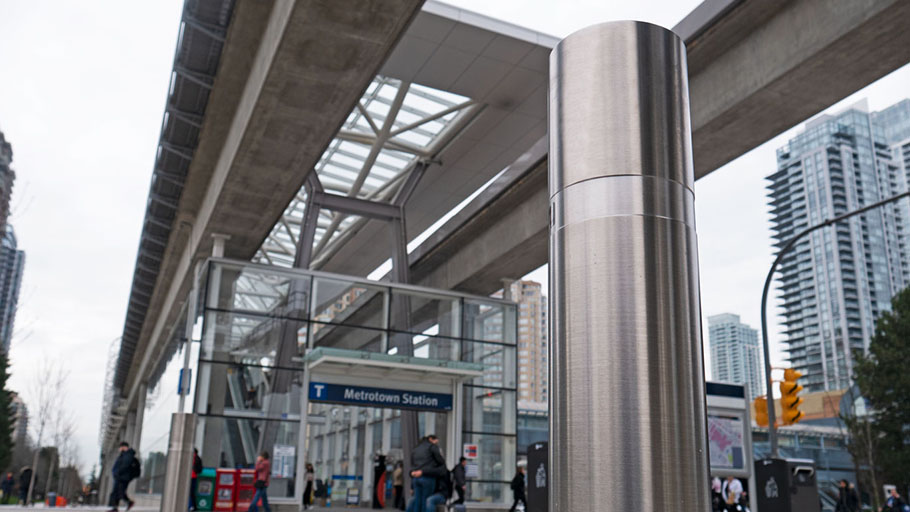
Proper care and maintenance go beyond mere routine; they are indispensable for prolonging the life of your outdoor metal site furnishings. From material selection to seasonal care, each aspect plays a crucial role in maintaining the quality and longevity of these products. By adhering to these guidelines, you can significantly enhance the durability and aesthetic appeal of your outdoor metal furnishings, ensuring they continue to serve and beautify public and private spaces for years to come.

